François De Roubaix
François de Roubaix (1939-04-03 - 1975-11-21) was a French multi-instrumentalist and composer for commercials, TV series, and about 30 feature-length films. He died aged 36 in a diving accident near Tenerife (Canary Isles). After discovering jazz music in 1954, he started playing trombone in Parisian bars, becoming friends with actor Pierre Richard in the process. It soon turned out he had a great sense of melody and sound, and how to mix instruments. He scored his first film in 1965, moving into the world of soundtracks. In 1972 he was one of the first to install a home studio which he used a lot for both experimentation and finalised tracks, often working its 8 tracks with engineer [a531561]. FDR freely combined classical (prerecorded) music with electronic instruments, early synthesizers and rhythm boxes. He is perhaps best known for his music for tv series Commissaire Moulin and Chapi Chapo and for the films La Scoumoune and Les Aventuriers and the oft-sampled Dernier Domicile Connu. Indeed, after his death FDR received new recognition because his music provided sample material for a new generation. For instance Carl Craig remixed him and Robbie Williams' producers sampled him. He also made two soundtracks for erotic films under the [a2318212] pseudonym. His last soundtrack was Le Vieux Fusil, for which he was awarded a César (French movie industry award) for best soundtrack music on the day he would have turned 37. In 1977 he received another posthumous César award, this time in the category best movie short, for "Comment ça va je m'en fous". Had he lived longer, he would have fulfilled his life long desire to make & direct more films himself. François de Roubaix was the son of film producer (of Belgian origin) Paul de Roubaix and the Italian graphic artist Leontina "Mimma" Indelli,.and was himself father of [a7985835] (born 1965) and [a4751957] (born 1975).
Releases
-
 Du Jazz À L'Electro 1965 → 1975
Du Jazz À L'Electro 1965 → 1975
-
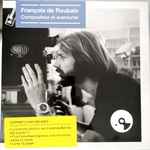 Compositeur Et Aventurier
Compositeur Et Aventurier
-
 Le Saut De L'Ange / R.A.S
Le Saut De L'Ange / R.A.S
-
 L'Homme Orchestre
L'Homme Orchestre
-
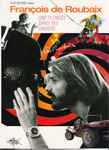 Une Plongée Dans Ses Univers
Une Plongée Dans Ses Univers
-
 Daughters Of Darkness - Les Lèvres Rouges (Original Soundtrack)
Daughters Of Darkness - Les Lèvres Rouges (Original Soundtrack)
-
 Le Saut De L'Ange / Les Anges (Original Motion Picture Soundtracks)
Le Saut De L'Ange / Les Anges (Original Motion Picture Soundtracks)
-
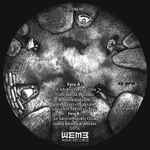 Le Labyrinthe Des Onix
Le Labyrinthe Des Onix
-
 Les Onix (Enregistrements Méconnus Pour Marionnettes, Théâtre Et Télévision (1972-1976))
Les Onix (Enregistrements Méconnus Pour Marionnettes, Théâtre Et Télévision (1972-1976))
-
 Le Samouraï (Bande Originale Du Film)
Le Samouraï (Bande Originale Du Film)
-
 Commissaire Moulin Et Autres Scènes De Crimes
Commissaire Moulin Et Autres Scènes De Crimes
-
 L'essentiel De François De Roubaix
L'essentiel De François De Roubaix
-
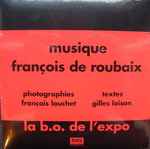 La B.O. De L'expo
La B.O. De L'expo
-
 Cristaux Liquides
Cristaux Liquides
-
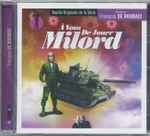 À Vous De Jouer Milord
À Vous De Jouer Milord
-
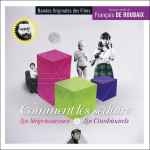 Comment Les Séduire / Les Strip-Teaseuses / Les Combinards
Comment Les Séduire / Les Strip-Teaseuses / Les Combinards
-
 Courts Metrages
Courts Metrages
-
 L'Antarctique (& Autres Séances Électroniques Rue De Courcelles)
L'Antarctique (& Autres Séances Électroniques Rue De Courcelles)
-
 Chansons De Films
Chansons De Films
-
 La Grande Lessive / L'Etalon
La Grande Lessive / L'Etalon
-
 La Frite Équatoriale / I Want To Suggest
La Frite Équatoriale / I Want To Suggest
-
 Charmeur D'émotions
Charmeur D'émotions
-
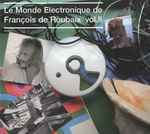 Le Monde Electronique De François De Roubaix Vol.II
Le Monde Electronique De François De Roubaix Vol.II
-
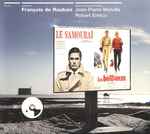 Les Aventuriers / Le Samouraï (Bandes Originales Des Films)
Les Aventuriers / Le Samouraï (Bandes Originales Des Films)
-
 Le Monde Électronique De François De Roubaix
Le Monde Électronique De François De Roubaix
-
 Cinemix Vol. 1
Cinemix Vol. 1
-
 Cinemix Album Sampler
Cinemix Album Sampler
-
 Bandes Originales De Films - Musiques De François De Roubaix
Bandes Originales De Films - Musiques De François De Roubaix
-
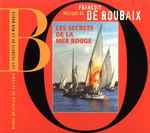 Les Secrets De La Mer Rouge (Bande Originale De La Série)
Les Secrets De La Mer Rouge (Bande Originale De La Série)
-
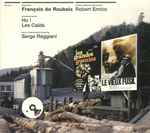 Les Grandes Gueules / Le Vieux Fusil (Bandes Originales Des Films)
Les Grandes Gueules / Le Vieux Fusil (Bandes Originales Des Films)
-
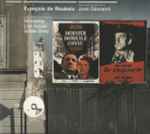 Dernier Domicile Connu / Le Rapace (Bandes Originales Des Films)
Dernier Domicile Connu / Le Rapace (Bandes Originales Des Films)
-
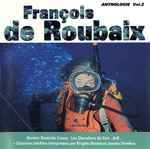 Anthologie Vol.2
Anthologie Vol.2
-
 Anthologie Vol.1
Anthologie Vol.1
-
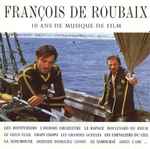 10 Ans De Musique De Film
10 Ans De Musique De Film
-
 La Meilleure Collection De François De Roubaix
La Meilleure Collection De François De Roubaix
-
 La Meilleure Collection De François De Roubaix II
La Meilleure Collection De François De Roubaix II
-
 Le Samouraï / Le Vieux Fusil / Les Grandes Gueules
Le Samouraï / Le Vieux Fusil / Les Grandes Gueules
-
 Les Plus Belles Musiques De François De Roubaix Vol. 3
Les Plus Belles Musiques De François De Roubaix Vol. 3
-
 La Scoumoune / L'etalon
La Scoumoune / L'etalon
-
 Les Plus Belles Musiques De Films De François De Roubaix Vol. 2
Les Plus Belles Musiques De Films De François De Roubaix Vol. 2
-
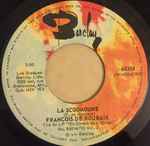 La Scoumoune / Tom 2
La Scoumoune / Tom 2
-
 Les Plus Belles Musiques De Films De François De Roubaix Vol 1
Les Plus Belles Musiques De Films De François De Roubaix Vol 1
-
 Astralement Vôtre (Bande Originale)
Astralement Vôtre (Bande Originale)
-
 Het Verborgen Geweer / Superman
Het Verborgen Geweer / Superman
-
 Le Vieux Fusil (Bande Originale Du Film)
Le Vieux Fusil (Bande Originale Du Film)
-
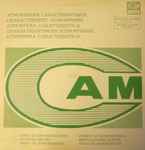 Atmosfera Caratteristica
Atmosfera Caratteristica
-
 Chapi Chapo (Bande Originale De La Série Télévisée)
Chapi Chapo (Bande Originale De La Série Télévisée)
-
![]() Le Soleil Se Lève A L'est
Le Soleil Se Lève A L'est
-
 Les Suspects (Extrait De La Bande Originale Du Film 'La Ballade Du Héros')
Les Suspects (Extrait De La Bande Originale Du Film 'La Ballade Du Héros')
-
 Les Anges
Les Anges
 Du Jazz À L'Electro 1965 → 1975
Du Jazz À L'Electro 1965 → 1975
 Compositeur Et Aventurier
Compositeur Et Aventurier
 Le Saut De L'Ange / R.A.S
Le Saut De L'Ange / R.A.S
 L'Homme Orchestre
L'Homme Orchestre
 Une Plongée Dans Ses Univers
Une Plongée Dans Ses Univers
 Daughters Of Darkness - Les Lèvres Rouges (Original Soundtrack)
Daughters Of Darkness - Les Lèvres Rouges (Original Soundtrack)
 Le Saut De L'Ange / Les Anges (Original Motion Picture Soundtracks)
Le Saut De L'Ange / Les Anges (Original Motion Picture Soundtracks)
 Le Labyrinthe Des Onix
Le Labyrinthe Des Onix
 Les Onix (Enregistrements Méconnus Pour Marionnettes, Théâtre Et Télévision (1972-1976))
Les Onix (Enregistrements Méconnus Pour Marionnettes, Théâtre Et Télévision (1972-1976))
 Le Samouraï (Bande Originale Du Film)
Le Samouraï (Bande Originale Du Film)
 Commissaire Moulin Et Autres Scènes De Crimes
Commissaire Moulin Et Autres Scènes De Crimes
 L'essentiel De François De Roubaix
L'essentiel De François De Roubaix
 La B.O. De L'expo
La B.O. De L'expo
 Cristaux Liquides
Cristaux Liquides
 À Vous De Jouer Milord
À Vous De Jouer Milord
 Comment Les Séduire / Les Strip-Teaseuses / Les Combinards
Comment Les Séduire / Les Strip-Teaseuses / Les Combinards
 Courts Metrages
Courts Metrages
 L'Antarctique (& Autres Séances Électroniques Rue De Courcelles)
L'Antarctique (& Autres Séances Électroniques Rue De Courcelles)
 Chansons De Films
Chansons De Films
 La Grande Lessive / L'Etalon
La Grande Lessive / L'Etalon
 La Frite Équatoriale / I Want To Suggest
La Frite Équatoriale / I Want To Suggest
 Charmeur D'émotions
Charmeur D'émotions
 Le Monde Electronique De François De Roubaix Vol.II
Le Monde Electronique De François De Roubaix Vol.II
 Les Aventuriers / Le Samouraï (Bandes Originales Des Films)
Les Aventuriers / Le Samouraï (Bandes Originales Des Films)
 Le Monde Électronique De François De Roubaix
Le Monde Électronique De François De Roubaix
 Cinemix Vol. 1
Cinemix Vol. 1
 Cinemix Album Sampler
Cinemix Album Sampler
 Bandes Originales De Films - Musiques De François De Roubaix
Bandes Originales De Films - Musiques De François De Roubaix
 Les Secrets De La Mer Rouge (Bande Originale De La Série)
Les Secrets De La Mer Rouge (Bande Originale De La Série)
 Les Grandes Gueules / Le Vieux Fusil (Bandes Originales Des Films)
Les Grandes Gueules / Le Vieux Fusil (Bandes Originales Des Films)
 Dernier Domicile Connu / Le Rapace (Bandes Originales Des Films)
Dernier Domicile Connu / Le Rapace (Bandes Originales Des Films)
 Anthologie Vol.2
Anthologie Vol.2
 Anthologie Vol.1
Anthologie Vol.1
 10 Ans De Musique De Film
10 Ans De Musique De Film
 La Meilleure Collection De François De Roubaix
La Meilleure Collection De François De Roubaix
 La Meilleure Collection De François De Roubaix II
La Meilleure Collection De François De Roubaix II
 Le Samouraï / Le Vieux Fusil / Les Grandes Gueules
Le Samouraï / Le Vieux Fusil / Les Grandes Gueules
 Les Plus Belles Musiques De François De Roubaix Vol. 3
Les Plus Belles Musiques De François De Roubaix Vol. 3
 La Scoumoune / L'etalon
La Scoumoune / L'etalon
 Les Plus Belles Musiques De Films De François De Roubaix Vol. 2
Les Plus Belles Musiques De Films De François De Roubaix Vol. 2
 La Scoumoune / Tom 2
La Scoumoune / Tom 2
 Les Plus Belles Musiques De Films De François De Roubaix Vol 1
Les Plus Belles Musiques De Films De François De Roubaix Vol 1
 Astralement Vôtre (Bande Originale)
Astralement Vôtre (Bande Originale)
 Het Verborgen Geweer / Superman
Het Verborgen Geweer / Superman
 Le Vieux Fusil (Bande Originale Du Film)
Le Vieux Fusil (Bande Originale Du Film)
 Atmosfera Caratteristica
Atmosfera Caratteristica
 Chapi Chapo (Bande Originale De La Série Télévisée)
Chapi Chapo (Bande Originale De La Série Télévisée)
 Les Suspects (Extrait De La Bande Originale Du Film 'La Ballade Du Héros')
Les Suspects (Extrait De La Bande Originale Du Film 'La Ballade Du Héros')
 Les Anges
Les Anges